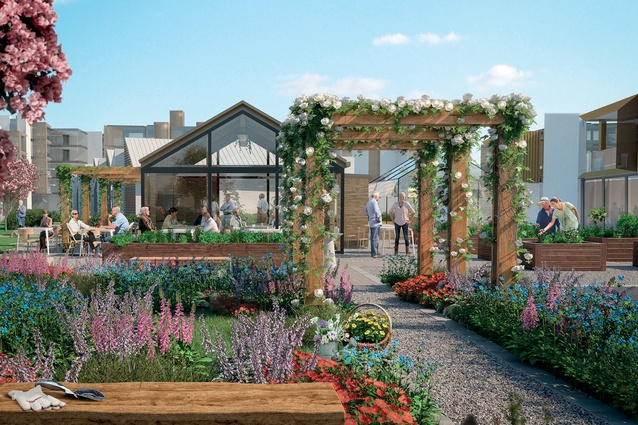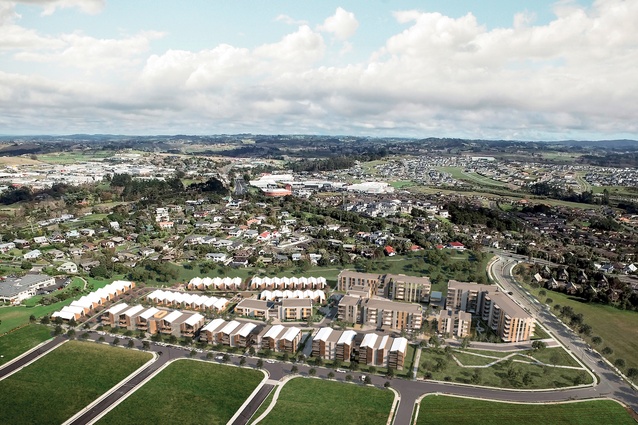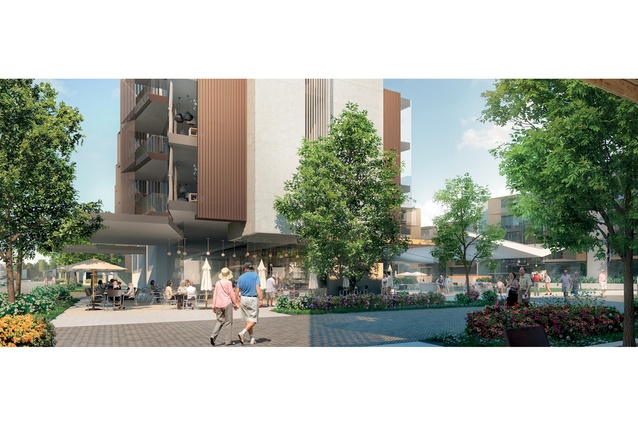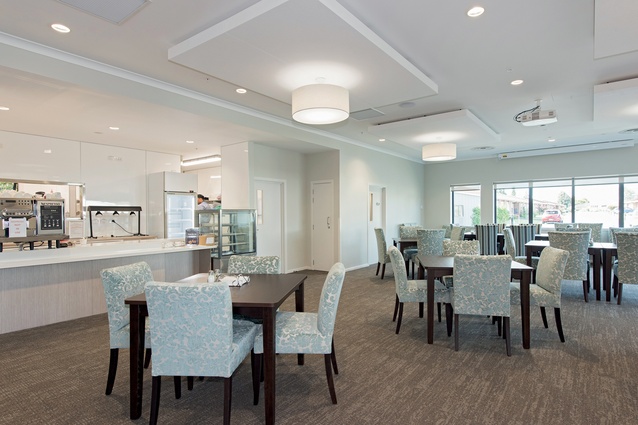Global perspective: Design for ageing
The aged-care industry is booming in New Zealand and, with this, comes significant responsibilities. Simon Bush-King sets out to explore the current state of the industry and how architecture and design play their roles within it.
We hear a lot about retirement these days but it’s easy to forget how recent an idea retirement even is. For most of history, if you were alive but not rich, you worked – relying on family and charity for any assistance you required as you aged. Although many would have experienced the Great Depression and some even war; the parents of baby boomers were the first to experience anything similar to modern-day childhood and teenage years and were the first to retire en masse with any sort of quality of life.
At the same time, their kids, the baby boomers, were the first generation to grow up being analysed, pulled apart and pitched to by a consumer industry that, by the 1950s, was really finding its feet. Growing up under the watchful gaze of mass marketing and media, this group became a generation of sophisticated consumers, who have changed each life stage as they have passed through. Naturally, as this cohort started to retire in the early 2010s, it has begun to change the retirement industry as well.
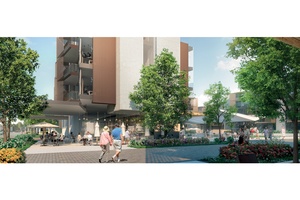
Parallel to this, service industries are being changed and challenged by a confluence of technology, consumer expectation and resource use. In short – the perfect mix. A large, well-resourced cohort of sophisticated consumers is retiring at a time when the provision of services across the board is also changing.
Good architecture and design can be great places to see how these big, sometimes abstract, changes look in real life. Across the world, we see examples of designers taking fresh looks at the ways in which we design for aging: from the urban design of our cities to how kitchens work for those who are less physically able.
At home, Metlifecare is in the process of developing Gulf Rise, a new, Warren and Mahoney designed retirement village near Orewa, north of Auckland, which will be open and connected, and a quite different from the more typical, gated community-styled property. Meanwhile, in Sweden, Marge Architects has taken a traditional European block layout and injected a greenhouse and clear connections from inside to outside, creating a care home that feels just as light and open in a location where winters last a lot longer and daylight hours change so much throughout the year.
Vårdboende Trädgårdarna
Completed a few years ago in Örebro, south-central Sweden, is the Vårdboende Trädgårdarna or Nursery Gardens project by Marge Architects. The architects are up front about the shared ambition for the project, with architect Lisa Smith, explaining: “A core value of the project is that all people should be able to live as they desire, regardless of their backgrounds or current circumstances”.
To meet this goal, the municipality of Örebro set out a vision for an innovative care home based on solid research with a design that supports meaningful recovery, rehabilitation, wellness and nature.
The perimeter block structure, a familiar form to most Swedes and Europeans, creates an easily securable building: helpful in a facility that houses some dementia patients. However, there are three internal courtyards, two of which are open to the surrounding landscape and both structure the internal circulation and give plenty of opportunity to enjoy open space in all types of weather.

Light from above is provided by many roof lights: an important consideration in a city this far north. The interior is defined by its relationship to these courtyards and the outdoors; each apartment is 35m2 and consists of a room with low windows allowing views from the bed, a kitchenette, a large bathroom, a storage room and a French balcony. Small domestic details familiar to most Swedes have also been employed.
Smith sums up the architects’ thinking: “Most kitchens in Sweden have a rug to protect the floor – of course, here it is a problem to use carpets so, instead we created patterns with mosaic tiles that reminded us of textiles.”
Near the entrance, an artwork by Meta Isæus-Berlin consists of a tiled well with a chandelier hanging above: a whimsical flourish for a building type more used to box-ticking regulation than to flights of fancy. To fight loneliness and isolation, the architects placed spaces with high levels of activity near the entrance and lobby: mailboxes, hairdresser, foot clinic, restaurant, conference rooms, newspaper stand and coffee.

Meanwhile, on the second floor is the winter garden and kitchenette, popularly used by residents for birthdays and events. Rated as LEED gold, the Nursery Gardens has been open for a few years so the architects are able to gather long-term feedback from residents and staff alike.
In Sweden, like New Zealand, it can be hard to attract and retain care staff; however, this facility has had up to 100 applications for a recent nursing position. The attractiveness of the workplace was commonly mentioned – surely a great indicator of a successful project.
Gulf Rise
Architects Warren and Mahoney (WaM) and Metlifecare are two established players in their respective markets. In setting up this collaboration, both partners were shrewd enough to understand the other’s strengths. Leveraging WaM’s considerable experience in urban design, multi-unit development and hospitality with Metlifecare’s institutional knowledge in operating retirement villages was the key to success.
WaM was involved from the beginning of the Gulf Rise Project, master-planning it to be as far removed from a gated community as possible while understanding and borrowing from the best urban design ideas to provide more safety and security than any wall could. Architect Shannon Joe sums this up by explaining their approach to the front door: “The front door is all parts of the site and is the project’s greatest strength.”
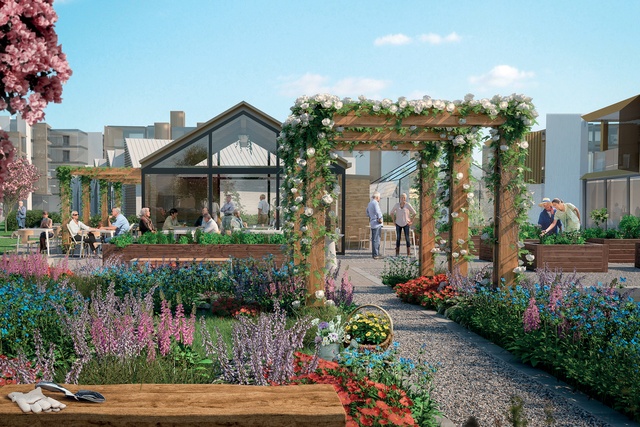
Clear pathways and public functions are highlighted with architectural gestures like open façades, double-height spaces and material use, combining to create a village where people intuitively know how to move around and feel safe in doing so.
Moving inside, the designs of the village’s public spaces and individual living units demonstrate the close collaboration of client and architect. Designed around quality of life and the changing demands of retirees, the individual living units are larger than usual, with storage and a degree of flexibility on how that space is used; a second bedroom, another bathroom or a study are all possible options.

Generous ceiling heights of 4.2m in the living rooms create proportions and frame views in a way most Auckland apartment owners can only dream of. This higher specification reflects a demand for quality but also the fact that these units are built for the long term, where occupancy periods might be five to 10 years.
Addressing ‘the elephant in the room’, that this is often the last home most residents will live in, Shannon Joe explains how “dignity takes centre stage” with no hidden back door – a common trope in retirement homes. He continues by explaining: “you can leave the way you came in – through the front door”.
Globally, the expected population of over-65s will double between 2011–2050 to 1.6 billion. This presents both a massive business opportunity, assisting the largest generation to retire, and a social opportunity to solve some serious problems facing older New Zealanders, including loneliness, poor mental health and the challenge of maintaining the quality of life.
Projects like Gulf Rise and the Nursery Gardens are starting in the right place. They begin conversations that may once have been avoided while borrowing successfully from other areas to create spaces and environments in which people want to spend time. For an industry that affects us all , in one way or the other, it is worth demanding more of the spaces where we spend the last years of our lives and projects like these help light the way.
In focus: Bob Bull
Director assets and development at The Selwyn Foundation
Interior: What are some of the largest changes you see happening in the aged-care business?
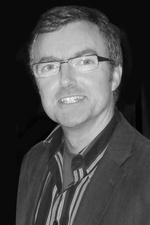
Bob Bull (BB): With the baby-boomer generation now reaching retirement age, there is more demand for an active-aging approach to life and, indeed care. The boomers are independent and want to remain that way for as long as possible. Retirement (or ‘non-retirement’) is considered a new and exciting chapter in their lives, with new experiences and ideas to be explored and enjoyed.
Aging is no longer seen as a medical issue; rather, it is more about a person’s well-being. We now look at ‘person-directed living’ and participatory care models, where individuals tell us what they need and require for their personal well-being. As a result of the changing requirements of those moving into retirement villages and residential care, we are changing the environments and buildings being developed.
Interior: What part do the interiors play in ensuring a successful social enterprise and business?
BB: The environment/interior can either create a community or create loneliness. In residential care, we are moving away from long corridors, and separate living, and creating households within buildings that look and function more like homes: open-plan kitchens, dining rooms, and indoor and outdoor living areas.
People are encouraged and able to engage with one another in more natural ways, retreating to their suites for quiet and personal time, just as one does in a family home environment.
Use it or lose it. Residents are encouraged to do more for themselves: a kitchen is provided so they can eat and have cups of tea when they want to. Families, too, can make themselves at home:, bake, cook or grab tea or coffee. The laundry provides normality for both residents and families, should they wish to do their own laundry, as if they were still living in their own family homes.
In independent living, villages are creating communal amenities where people can come together: shops, hairdressers, cafés, medical centres, cinemas, bowling greens, gyms, pools, chapels and more.
Interior: What have been some of the biggest interior changes you have seen taking place in your industry?
BB: The biggest is the de-institutionalisation of facilities. Normalising the environment to be as home-like as possible – lounge, fireplace, dining-room table, kitchen – we are recognising that these buildings are actually people’s homes.
Environments are being created where families are welcomed and can be part of their loved ones’ lives. Families are able to stay overnight, in specially designed whānau rooms, and staff-only areas and nursing stations are being removed.
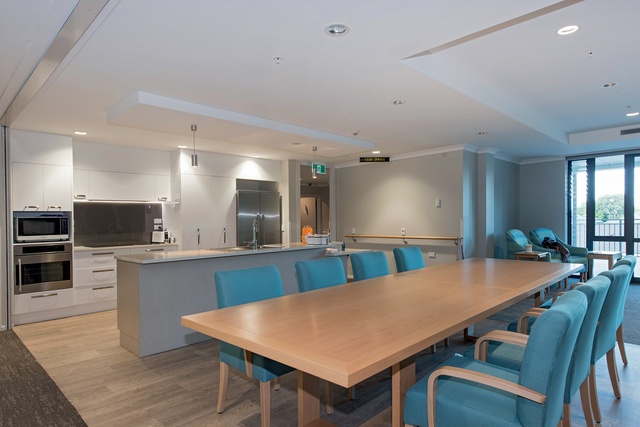
Interior: What will be some of the biggest challenges?
BB: Culture is a big issue. Many of the staff, residents and families of today are already institutionalised; it will take time for them to get used to the changes around independent living and to residents doing more for themselves.
The physical environments of older facilities simply can’t support the new models of care and ways of operating. So, massive investment is required for rebuilding.
Interior: How do you see technology making the jobs of aged-care industry professionals and facility managers better in the future?
BB: Technology developments will allow people to remain at home in their communities for longer by enabling more services to be delivered into people’s homes.
Within the care environment, technology is assisting us to work smarter, and providing more independence, assisting in practical handling and medication delivery, etc. Best-practice asset management will move to enhanced monitoring of facilities and this should deliver higher levels of service.
Interior: If you could give one piece of advice to anyone designing aged-care interiors, what would it be?
BB: Live in the shoes of an older person to understand what their needs and requirements are, and what their limitations are. Then look to co-design with the customer (older people/residents and staff) to achieve a real fit-for-purpose design.
This article first appeared in Interior magazine.




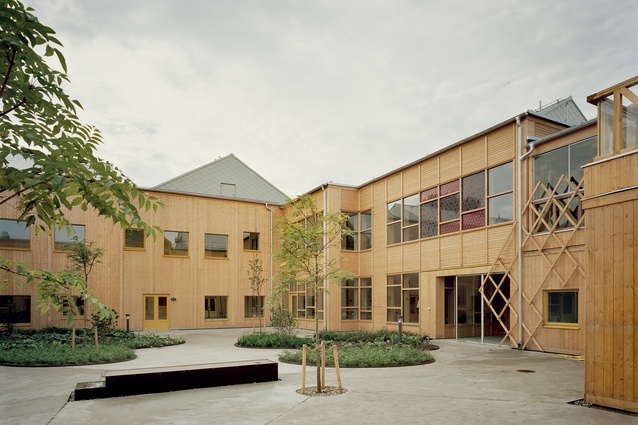


![Architect Lisa Smith explains, “A core value of the [Nursery Gardens] project is that all people should be able to live as they desire, regardless of their backgrounds or current circumstances.”](https://cdn.architecturenow.co.nz/site_media/media/cache/56/05/5605ad11b15824bc5c98c51041cf917f.jpg)
